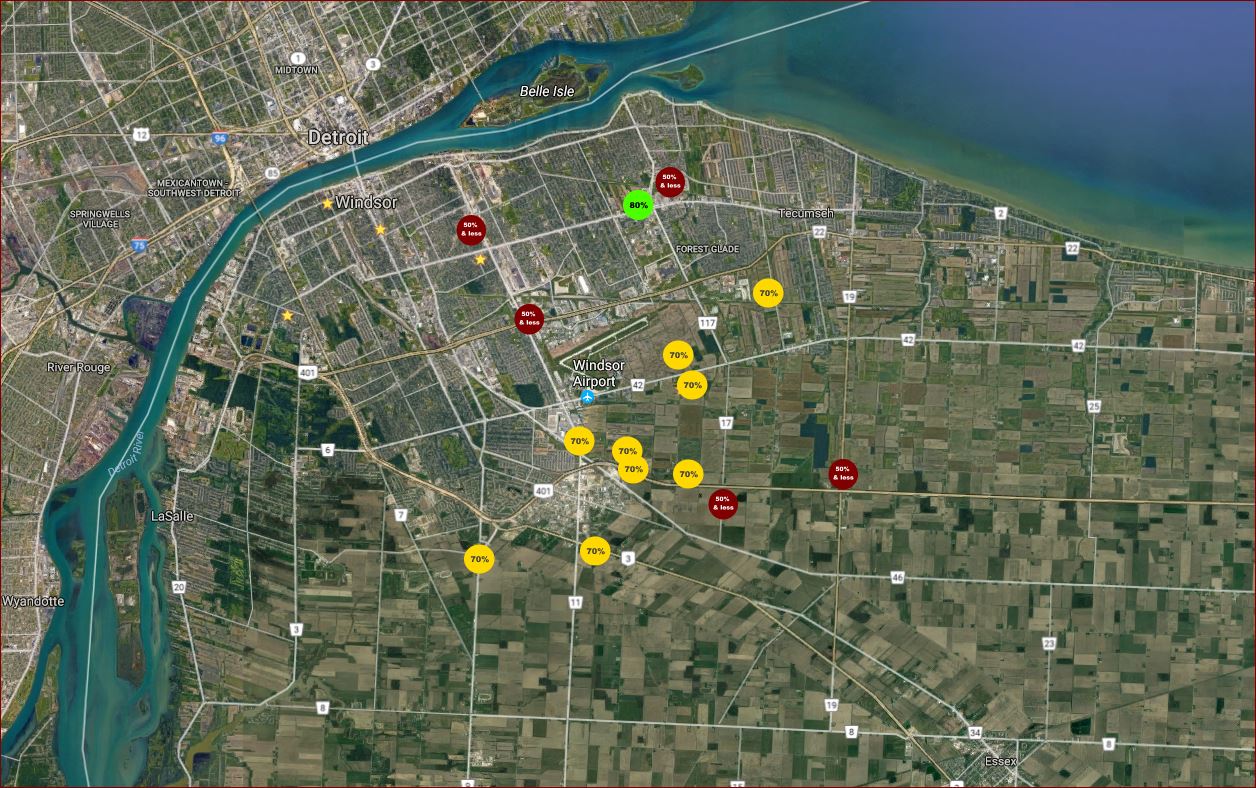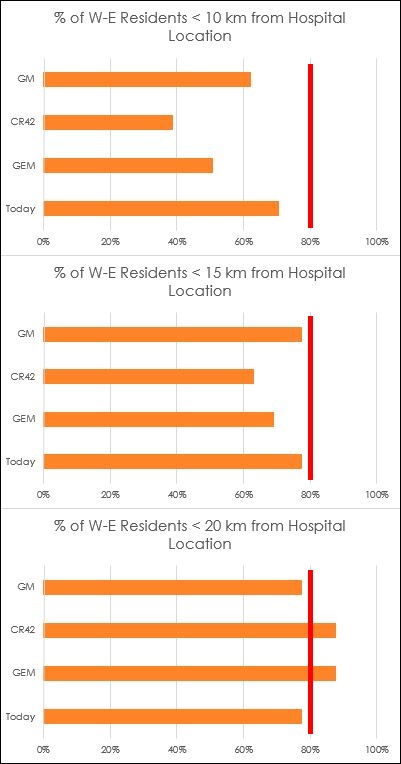Service Catchment Area
One of the few things everyone can agree on is, unsurprisingly, that access to hospital healthcare is paramount.
Service Catchment Area was allocated the highest weighting (together with 4 of the 31 other criteria, namely:parking, parcel size, roadway capacity and transit route).
Service Catchment Area was allocated the highest weighting (together with 4 of the 31 other criteria, namely:parking, parcel size, roadway capacity and transit route).
Extract from the site selection committee's questions - notice how the bar was lowered in order to achieve a 70% score:
Only 10 of the 22 sites were allocated a score above 50%. No sites got full marks.
Let’s look at the scores:
Let’s look at the scores:
It could be argued that not one of the submitted sites can be considered perfect.
This is contrary to how the County Road 42 site has been described.
Let’s examine the evaluation criteria:
Consideration should be given to the surrounding population (current and future) numbers as an area with a higher density would be more desirable for a variety of reasons (e.g. distance of travel, services and greater number of people within a smaller area). Future population within an area should be considered to ensure that proper services will be available. Thought should also be given to distance to hospice, long term care homes, other health services such as police, fire and EMS.
This is contrary to how the County Road 42 site has been described.
Let’s examine the evaluation criteria:
Consideration should be given to the surrounding population (current and future) numbers as an area with a higher density would be more desirable for a variety of reasons (e.g. distance of travel, services and greater number of people within a smaller area). Future population within an area should be considered to ensure that proper services will be available. Thought should also be given to distance to hospice, long term care homes, other health services such as police, fire and EMS.
|
The scale factors help explain why so many sites didn’t get a passing grade:
Centrally located to the population within a 5 km drive (current and to 2031):
Where is a 5 km drive evaluated? What about non-driving access? The scoring criteria lend themselves to the following questions:
|
Source: Google Maps
|
Let's look again at what it would take to achieve a perfect score:
80% of Region’s population within a 10km drive
This seems like a reasonable goal for a "perfect" location. Remember that the average distance for Ontario cities, and also Canada as a whole, is under 4km from the core to the nearest hospital. There isn't a single city with its (closest) hospital farther than 10km from the core.
In a society with more seniors than ever before, where climate change and climate change legislation are forcing us to reduce our carbon footprint, and given that we know the millennial generation is less interested in driving than their parents and grandparents before them, a benchmark distance of 10km is not at all unreasonable.
If we're going to spend $2 billion and demolish our two existing hospitals in the process, don't we deserve great hospital access for everyone?
Because no one site received a perfect score, it raises an important question about whether it is even possible to adequately serve the entire region’s hospital healthcare needs from one location.
80% of Region’s population within a 10km drive
This seems like a reasonable goal for a "perfect" location. Remember that the average distance for Ontario cities, and also Canada as a whole, is under 4km from the core to the nearest hospital. There isn't a single city with its (closest) hospital farther than 10km from the core.
In a society with more seniors than ever before, where climate change and climate change legislation are forcing us to reduce our carbon footprint, and given that we know the millennial generation is less interested in driving than their parents and grandparents before them, a benchmark distance of 10km is not at all unreasonable.
If we're going to spend $2 billion and demolish our two existing hospitals in the process, don't we deserve great hospital access for everyone?
Because no one site received a perfect score, it raises an important question about whether it is even possible to adequately serve the entire region’s hospital healthcare needs from one location.




